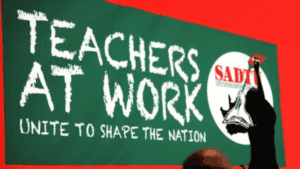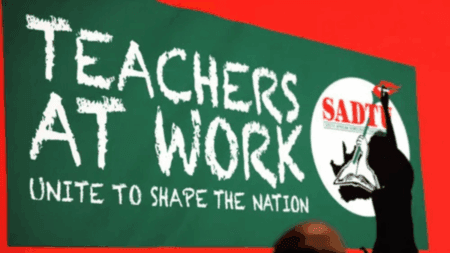Securing a government job is often considered a prestigious and stable career option. The recruitment process for government jobs typically involves multiple stages designed to identify and select the best candidate for the position. Unlike private sector jobs, government recruitment tends to be more systematic and structured, ensuring transparency and fairness.
Stages of the Recruitment Process for Government Jobs
1. Application
The first step in any government recruitment process is the application phase. Candidates must submit their applications through designated channels such as the government’s official recruitment portal, relevant job boards, or through recruitment agencies associated with the department. In some cases, applications might also be accepted via mail.
To ensure a smooth application process, candidates need to adhere to the following:
- Read the Job Description Carefully: Make sure you meet all the specified qualifications and requirements before applying.
- Complete the Application Form Accurately: Even minor errors can lead to disqualification at this stage.
- Attach All Required Documentation: This may include your ID, educational certificates, proof of residency, and more.
Tip: To enhance your chances, tailor your application to highlight your strengths in relation to the job description.
2. Screening & Pre-Selection
After receiving applications, the recruiting team initiates a screening process to filter out unsuitable candidates. This helps in reducing the pool of applicants to a manageable number for further evaluation.
Screening methods include:
- Resume Screening: Recruiters look for key skills, qualifications, and relevant experience.
- Pre-employment Assessments: These assessments may test cognitive abilities, language proficiency, or specific job-related skills.
- Phone Interviews or Email Correspondence: A brief interaction to confirm the details provided in the application.
During this phase, candidates who do not meet the basic criteria or have incomplete applications are typically excluded.
3. Interview
The interview stage is crucial, as it provides an opportunity for the recruiters to evaluate the candidate’s suitability for the role. Depending on the level and type of position, interviews may be structured, semi-structured, or unstructured.
Types of interviews include:
- One-on-One Interview: The most common format, where the candidate meets with a hiring manager or panel.
- Panel Interview: Involves multiple interviewers, which can be daunting but allows a more thorough evaluation.
- Technical Interviews: For roles requiring specialized skills, such as IT or engineering positions, technical interviews are conducted to test specific knowledge.
Tip: How to Prepare for Job Interviews as a Beginner
4. Assessment
Assessments are an additional stage to evaluate a candidate’s technical, cognitive, and behavioral competencies. Depending on the job requirements, this stage may include:
- Cognitive Ability Tests: Assess logical reasoning, numerical aptitude, and verbal skills.
- Personality Questionnaires: Gauge your alignment with the organization’s culture and job expectations.
- Case Studies or Practical Exercises: Simulate real job scenarios to assess problem-solving abilities and decision-making skills.
Candidates who perform well in the assessments are considered more favorably in the decision-making process.
5. References and Background Check
This stage involves a thorough check of the candidate’s background and qualifications. Reference checks validate the information provided during the earlier stages, such as educational qualifications, previous employment, and skills.
The government also conducts background checks to ensure that candidates:
- Do not have a criminal record.
- Have a clean financial history, as positions involving financial responsibility may require this.
- Meet all the criteria for integrity and ethical behavior, especially for sensitive or high-security positions.
Tip: Be honest throughout the process, as discrepancies can lead to disqualification.
6. Decision
After completing all the above steps, the recruitment team or hiring manager makes a decision based on predefined criteria and evaluation scores. Sometimes, the decision-making process involves:
- Feedback from Interviewers and Assessors: Each stage of evaluation is reviewed comprehensively.
- Comparing Candidates Against the Job Profile: The ideal candidate is selected based on how closely they match the desired profile.
- Internal Discussions and Recommendations: This may involve senior officials and departmental heads for final approval.
Tip: If you reach this stage, it’s a good sign. Keep your communication lines open and check your emails regularly for updates.
7. Job Offer & Contract
Once a candidate is selected, they are issued a formal job offer. This offer includes:
- Job Title and Department: Clearly specifying the position and department.
- Salary and Benefits Package: Includes information on pay grade, allowances, and other benefits.
- Employment Terms and Conditions: Outlines probation period, working hours, and job expectations.
After reviewing and accepting the offer, a formal employment contract is drafted and signed. This marks the official start of your employment in the government.
Tip: Top Online Courses to Boost Your Career in Government
Securing a government job is a comprehensive process that requires meticulous preparation and a deep understanding of each selection stage. By familiarizing yourself with the seven stages of the recruitment process—Application, Screening & Pre-Selection, Interview, Assessment, References and Background Check, Decision, and Job Offer & Contract—you can navigate the journey with confidence and clarity. Each phase demands a strategic approach, from tailoring your application to acing assessments and interviews.






